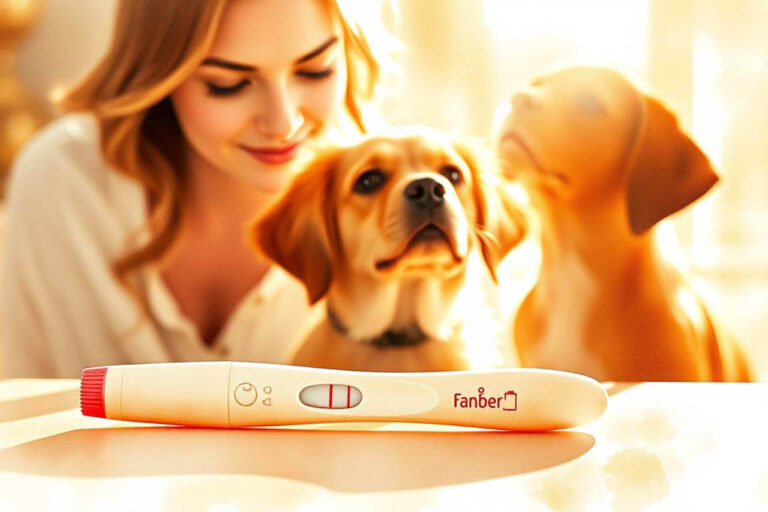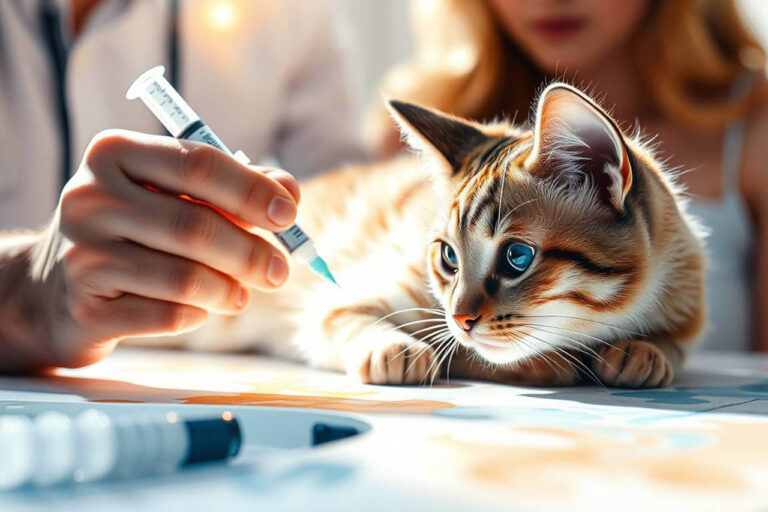Your cart is currently empty!
Early Signs of Parvo in Puppies and Dogs

Early signs of parvo can be subtle and easy to miss, but recognizing them is crucial because parvo is a severe and life-threatening illness for puppies and dogs. Fortunately, you can now test for parvo at home quickly and accurately with our lateral-flow immunoassay (LFIA) Parvo tests.
Parvo is a super dangerous virus for dogs, so knowing the first signs is super important. Here’s what to watch for in the first day or two.
First Day (Super Early Signs of Parvo):
These are easy to brush off, but they’re your first clues.
● No Energy Whatsoever: Your pup doesn’t want to play, run, or even really move. They might just lie in one spot and seem super tired and weak. This is usually the very first sign.
● Doesn’t Want to Eat: If your puppy, who normally gets super excited for food, suddenly ignores their dinner and even their favorite treats, that’s a big red flag.
● Feeling Feverish: They might feel really warm to the touch because they have a fever. Later on, as they get sicker, they might feel unusually cold instead.
Getting Worse (Next Day or Two)
If the virus isn’t stopped, things get much more serious really fast.
● Can’t Stop Throwing Up: The vomiting isn’t just once; it keeps happening. What comes up might be clear, yellow, or foamy.
● Really Bad Diarrhea: This is the classic sign of parvo. It’s not normal diarrhea—it’s often watery, has a really awful and unusual smell, and can have blood in it (which can look bright red or dark and tarry).
● Tummy Troubles: Their belly might look puffy or swollen, and they might cry, whine, or act hurt if you try to touch it because it’s so sore.
This is an Emergency (Critical Signs of Parvo)
If a puppy gets to this point, they are in extreme danger and need a vet right away.
● Dried Out (Dehydrated): From all the vomiting and diarrhea, their body loses water way faster than they can drink. You might notice their gums feel sticky, their eyes look sunken in, or if you gently pinch their skin, it doesn’t spring back like it should.
● Too Weak to Stand: They become so weak that they can’t even get up.
● Breathing Fast: Their heart might be racing and they might have trouble catching their breath.
● Total Collapse: Without help, the puppy can go into shock, which can be deadly.

What to DO RIGHT NOW if You See These Parvo Signs:
- CALL THE VET. NOW. Don’t wait until morning. Don’t hope it gets better. This is a life-or-death emergency. Call your vet or an emergency animal hospital immediately and tell them you think your puppy might have parvo.
- Keep Them Away from Other Dogs: Parvo spreads like crazy. Isolate your sick puppy from any other dogs immediately.
- Don’t Try to Force Them to Drink: It might seem like a good idea, but giving water to a puppy who’s vomiting can actually make it worse. The vet will give them fluids directly into their vein to help.
- Be a Clean Freak: This virus is tough and can live everywhere—on your floor, your shoes, your clothes—for a very long time. If you have other dogs, make sure they are fully vaccinated and try to keep them away from anywhere the sick puppy has been.
The best way to fight parvo is to never get it in the first place. The biggest thing you can do is make sure your puppy gets all of their parvo shots on time (your vet will tell you the schedule) and keep them away from dog parks and pet stores until they are fully vaccinated.
We offer single parvo tests — A-PET-CARE Parvovirus (Parvo) Ag At-Home Test — for detection of parvovirus antigen only, as well as combination test kits — for detection of Parvovirus in combination with other diseases, like:
- Combo 2-in-1 Test Kits for Parvo and Canine Coronavirus (CPV+CCV Ag)
- Combo 2-in-1 Test Kits for Parvo and Distemper (CPV+CDV Ag)
- Combo 3-in-1 Test Kits for Parvo, Canine Coronavirus and Giardia (CPV+CCV+GIA Ag)
Disclaimer
This article is for informational purposes only and is not a substitute for professional veterinary advice. Always consult a licensed veterinarian if your dog shows signs of illness. TAKE&TEST and the authors are not responsible for misuse of test kits or treatment decisions based on this information.






